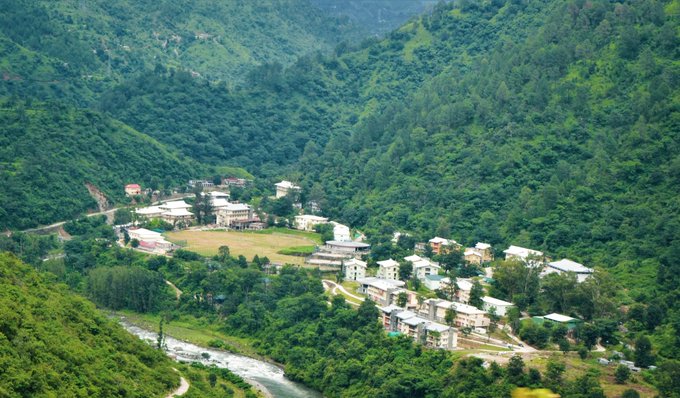IIT Mandi signs an MoU with the C-DAC to establish Supercomputing Facilities
Mandi: Indian Institute of Technology Mandi has signed a Memorandum of Understanding (MoU) with the Centre for Development of Advanced Computing (C-DAC), Pune, to establish Rs. 17 crore worth of Supercomputing facility of 650 TF Compute power for research and development activities. The MoU was signed today, 12th October 2020, by Prof. Ajit K. Chaturvedi, Director, IIT Mandi, and Dr. Hemant Darbari, Director General, C-DAC, India, during a virtual event in the presence of Sh. Sanjay Dhotre, Hon’ble Minister of State (Electronics & Information Technology, Education and Communications), and Prof. Ashutosh Sharma, Secretary, Department of Science and Technology, Government of India. The MoU has been signed for a period of five years and can be extended by mutual agreement.
A supercomputer is a computer that has very high speed in its operation and higher memory. This supercomputing system can perform assigned tasks including multiple tasks at very high speeds than any other normal personal computer and in many cases are able to operate at speeds that are millions of times faster than ordinary PCs.
Speaking during the event, Sh. Sanjay Dhotre, Chief Guest and Hon’ble Minister of State (Electronics & Information Technology, Education and Communications), Government of India, said, “The National Supercomputing Mission is an important initiative of the Government of India. C-DAC along with the IISc, IITs, and, NITs, is playing an eminent role in achieving the goal of Digital India and Atmanirbhar Bharat mission. These MoUs will help in increasing India’s global relevance in the field of Supercomputing. I congratulate C-DAC and partner Institutes for this milestone”.
Speaking during the event, Prof. Ashutosh Sharma, Guest of Honour and Secretary, Department of Science & Technology, Government of India, said, “In the past five years, our emphasis from buying the hardware and software components of supercomputer has gone to manufacturing these components under the Atmanirbhar Bharat mission of the Government of India. These MoUs are the strong foundation of a bright future. We are now on a path to design and fabricate the hardware and software aspects of the supercomputing facilities in India”.
Speaking about the new Supercomputing facility, Prof. Ajit K. Chaturvedi, Director, IIT Mandi, said, “IITs are pioneering in the field of computer science in the country. With the setup of this Supercomputing facility at IIT Mandi, we are looking forward to addressing every area of science and technology. This supercomputer will enhance our capability in training the researchers including the faculty and students of the Institute. This MoU with C-DAC is a great milestone for the IIT Mandi”.
The Supercomputer will be made operational for research and development purposes for users at IIT Mandi within the next four months. The Department of Science and Technology (DST) along with the Ministry of Electronics and Information Technology (MeitY) are coordinating the project and the Center for Development of Advanced Computing (C-DAC), Pune, is the implementing agency. C-DAC, Pune, will install the Supercomputing facility in IIT Mandi with liquid-cooled racks and 200 Gigabit Infiniband connectivity.
It is notable that IIT Mandi already has an in-house High-performance Computing (HPC) heterogeneous Cluster set up in 2014. The facility has more than 400 registered users from the research community of IIT Mandi working on applications including fluid mechanics, engineering, biotechnology, molecular dynamics, and computational chemistry, among others. The new Supercomputing system, which will have 13 times more computing power than the current cluster, will not only boost the HPC usages and research environment in the Institute but also enhance its research capability. For the same, the Institute is setting up a centralised supercomputing building to house the new facility along with the previous HPC cluster and Technology Innovation Hub (TIH) infrastructure.

